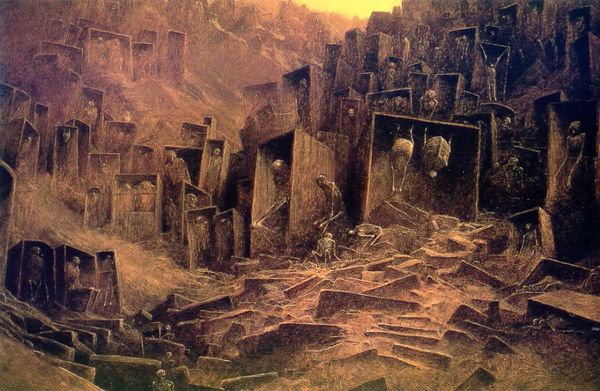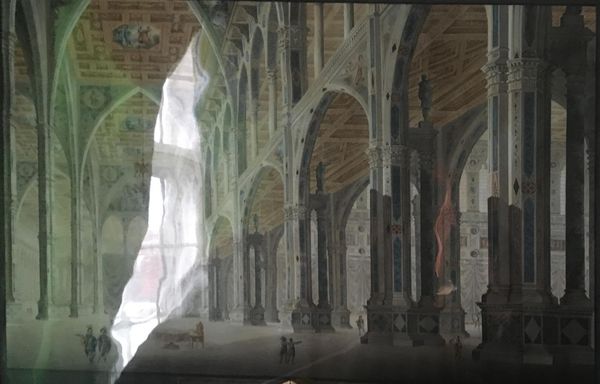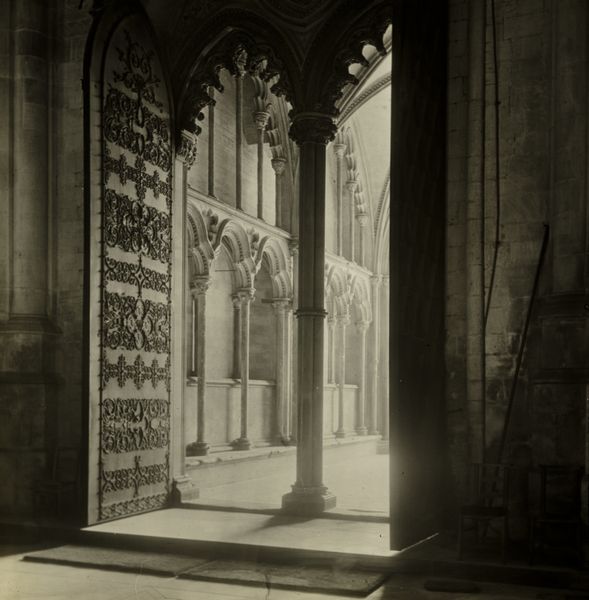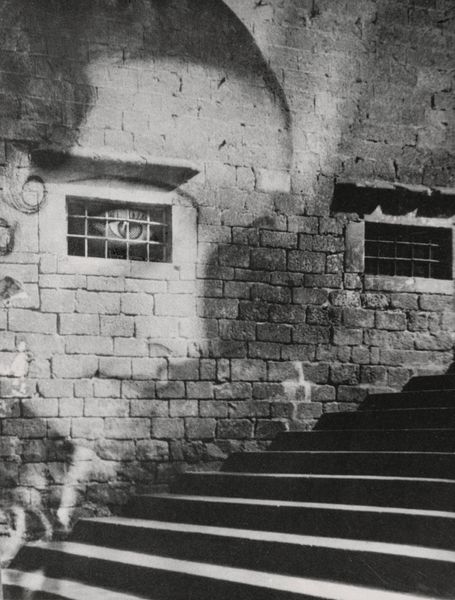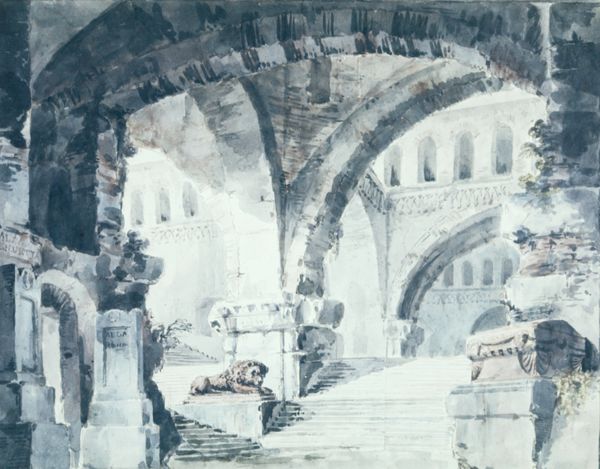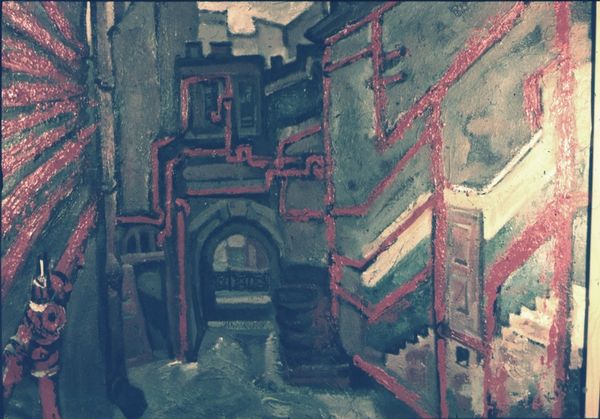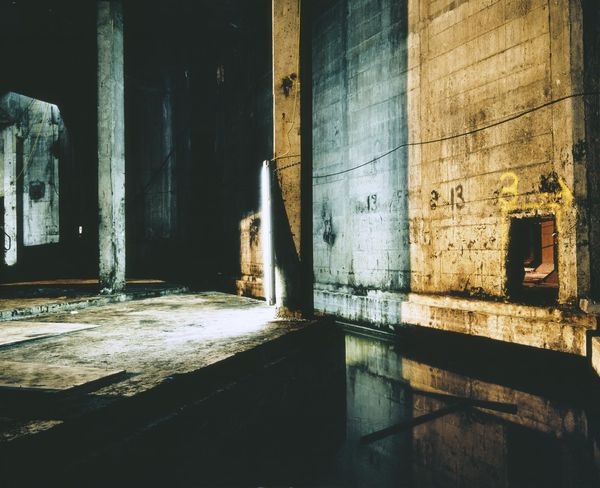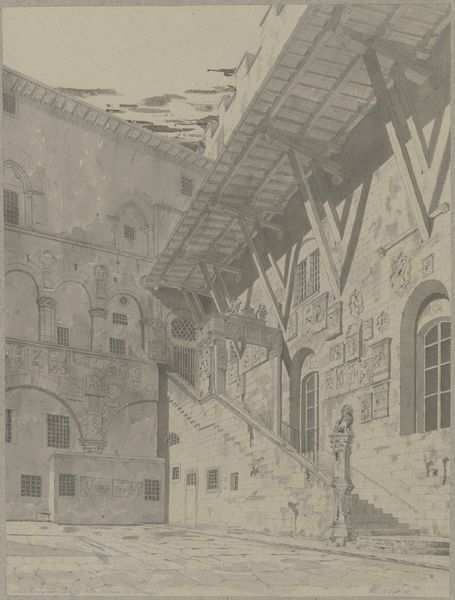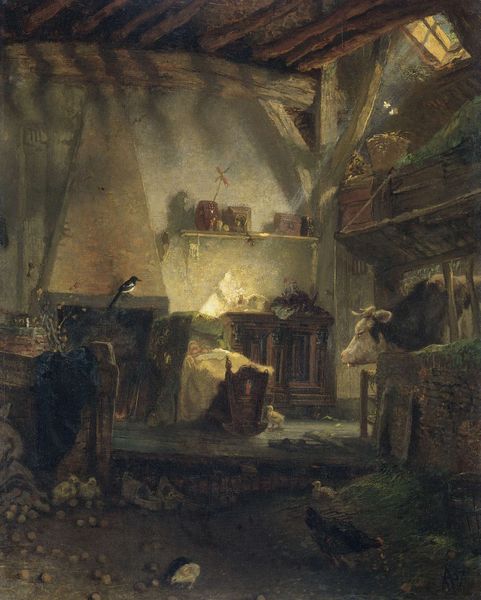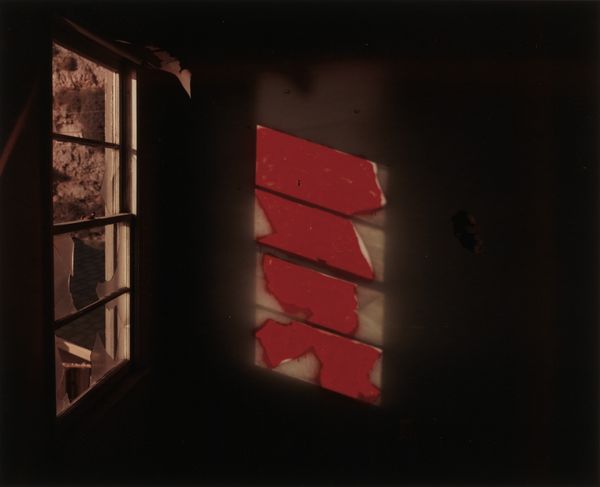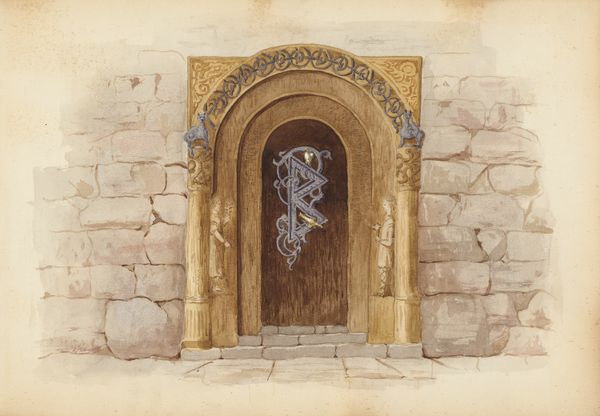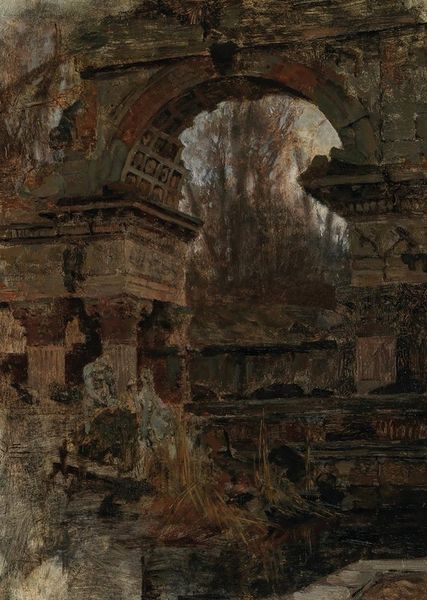
Dimensions: 57.7 x 69.7 cm
Copyright: Public Domain
Editor: Here we have Carl Georg Adolph Hasenpflug’s “Church Ruin in Winter,” created in 1848 using oil and tempera on canvas. It's incredibly bleak and haunting. What strikes you most when you look at this ruin? Curator: I’m immediately drawn to the historical implications embedded in the ruin itself. Consider how the gothic style, once a symbol of religious power and social order, is now presented in decay. How does Hasenpflug use this derelict space to comment on the changing power structures of 19th-century Europe, specifically thinking about the rise of secularism during this era? Editor: So, it’s not just about a pretty landscape, but a statement? Curator: Precisely. Look at how the cold, unforgiving winter pervades the scene. The ruin could symbolize not only the literal crumbling of religious architecture, but perhaps also a broader societal decay. How might we connect this imagery to the philosophies of Romanticism, which often grappled with themes of mortality and the sublime in nature? Editor: I see the Romantic influence now, that fascination with ruins. But why focus on a church? Curator: The choice of a church ruin is critical. It’s a loaded symbol, ripe with centuries of meaning tied to faith, community, and power. By depicting it in a state of collapse, Hasenpflug could be questioning traditional values and perhaps reflecting anxieties about social and religious upheaval. Editor: So it's a visually beautiful, yet politically charged piece. I wouldn't have seen that at first glance. Curator: Art often works on multiple levels. Examining its historical and social context allows us to appreciate the complex layers of meaning that the artist may have intended. This contextual awareness gives us tools to view, analyze and engage more critically with the artworks we see. Editor: Absolutely. I’ll definitely consider context more closely from now on.
Comments
stadelmuseum over 1 year ago
⋮
Silence. The onlooker’s gaze is guided towards the light through a rounded arch. Snow reflects the sun, which casts a dim light onto the church ruin. The atmospheric mise-en-scène appeals to the viewer’s curiosity to find out what is going on. Set in a wintry landscape with a dead tree, the derelict building with its Gothic and Romanic architectural elements is reminiscent of motifs typical for the Dresden Romantics around Caspar David Friedrich. The minute handling of paint shows the influence of Carl Friedrich Lessing, the head of the Düsseldorf School, whom Hasenpflug had met in the 1830s.
Join the conversation
Join millions of artists and users on Artera today and experience the ultimate creative platform.
